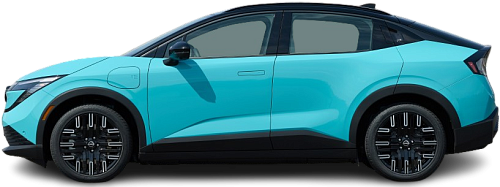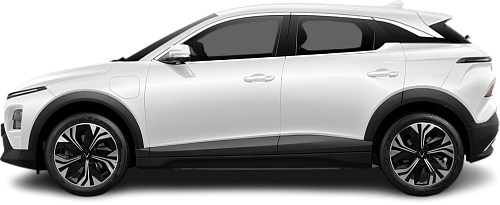Global EV Comparison: Nissan Leaf 52 kWh vs VinFast VF 6 Eco
Struggling to Decide? Let AI Help!
Your AI Summary Is Ready!
General Info
Although both vehicles have been announced, they are not yet in production and will not be available for sale in Europe.
The two vehicles share the same body style: SUV.
| Property | Nissan Leaf 52 kWh | VinFast VF 6 Eco |
|---|---|---|
| Years of Production | 2025-… | 2024-… |
| Current Status | Announced | Announced |
| Country of Manufacture | Japan, UK, USA | Vietnam |
| Body Style | SUV | SUV |
| Market Availability | EU, USA | USA |
| GCC Score | 5.6 | 5.3 |
Range and Efficiency
Even though the VinFast VF 6 Eco (2024-…) has a larger battery, the Nissan Leaf 52 kWh (2025-…) higher energy efficiency results in a longer real-world driving range.
| Property | Nissan Leaf 52 kWh | VinFast VF 6 Eco |
|---|---|---|
| Range (EPA) | 402 km | - Range (EPA) |
| Range (WLTP) | - Range (WLTP) | 399 km |
| Range (GCC) | 382 km | 339 km |
| Battery Capacity (Nominal) | 52 kWh | 63 kWh |
| Battery Capacity (Usable) | 49.4 kWh | 59.6 kWh |
| Efficiency per 100 km | 12.9 kWh/100 km | 17.6 kWh/100 km |
| Efficiency per kWh | 7.73 km/kWh | 5.69 km/kWh |
| Range and Efficiency Score | 8.1 | 6.1 |
Charging
Both vehicles utilize a standard 400-volt architecture.
The Nissan Leaf 52 kWh (2025-…) offers faster charging speeds at DC stations, reaching up to 150 kW, while the VinFast VF 6 Eco (2024-…) maxes out at 100 kW.
The VinFast VF 6 Eco (2024-…) features a more powerful on-board charger, supporting a maximum AC charging power of 11 kW, whereas the Nissan Leaf 52 kWh (2025-…) is limited to 7.2 kW.
| Property | Nissan Leaf 52 kWh | VinFast VF 6 Eco |
|---|---|---|
| Max Charging Power (AC) | 7.2 kW | 11 kW |
| Max Charging Power (DC) | 150 kW | 100 kW |
| Architecture | 400 V | 400 V |
| Charge Port | CCS Type 2 | CCS Type 2 |
| Charging Score | 4.6 | 5.6 |
Performance
Both vehicles are front-wheel drive.
Both cars offer the same motor power, but the Nissan Leaf 52 kWh (2025-…) achieves a faster 0-100 km/h time.
| Property | Nissan Leaf 52 kWh | VinFast VF 6 Eco |
|---|---|---|
| Drive Type | FWD | FWD |
| Motor Type | PMSM | PMSM |
| Motor Power (kW) | 130 kW | 130 kW |
| Motor Power (hp) | 174 hp | 174 hp |
| Motor Torque | 345 Nm | 250 Nm |
| 0-100 km/h | 7.5 s | 8.5 s |
| Top Speed | 144 km/h | 180 km/h |
| Performance Score | 3.3 | 3.4 |
Dimensions
The Nissan Leaf 52 kWh (2025-…) has a longer body, while the VinFast VF 6 Eco (2024-…) stands taller, offering a more elevated ride. Their widths are almost identical, so both offer a similar amount of shoulder room.
Both models have similar wheelbase lengths.
| Property | Nissan Leaf 52 kWh | VinFast VF 6 Eco |
|---|---|---|
| Length | 4405 mm | 4238 mm |
| Width (with Mirrors) | 2099 mm | 2118 mm |
| Width (w/o Mirrors) | 1810 mm | 1820 mm |
| Height | 1557 mm | 1594 mm |
| Wheelbase | 2690 mm | 2730 mm |
Cargo and Towing
The Nissan Leaf 52 kWh (2025-…) provides more cargo capacity, featuring both a larger trunk and more space with the rear seats folded.
Neither car is equipped with a frunk (front trunk).
Neither vehicle is officially rated for towing in in the EU.
| Property | Nissan Leaf 52 kWh | VinFast VF 6 Eco |
|---|---|---|
| Number of Seats | 5 | 5 |
| Curb Weight | 1794 kg | 1960 kg |
| Cargo Volume (Trunk) | 565 l | 350 l |
| Cargo Volume (Max) | 1573 l | 1275 l |
| Cargo Volume (Frunk) | - Cargo Volume (Frunk) | - Cargo Volume (Frunk) |
| Cargo and Towing Score | 5.8 | 5.5 |




